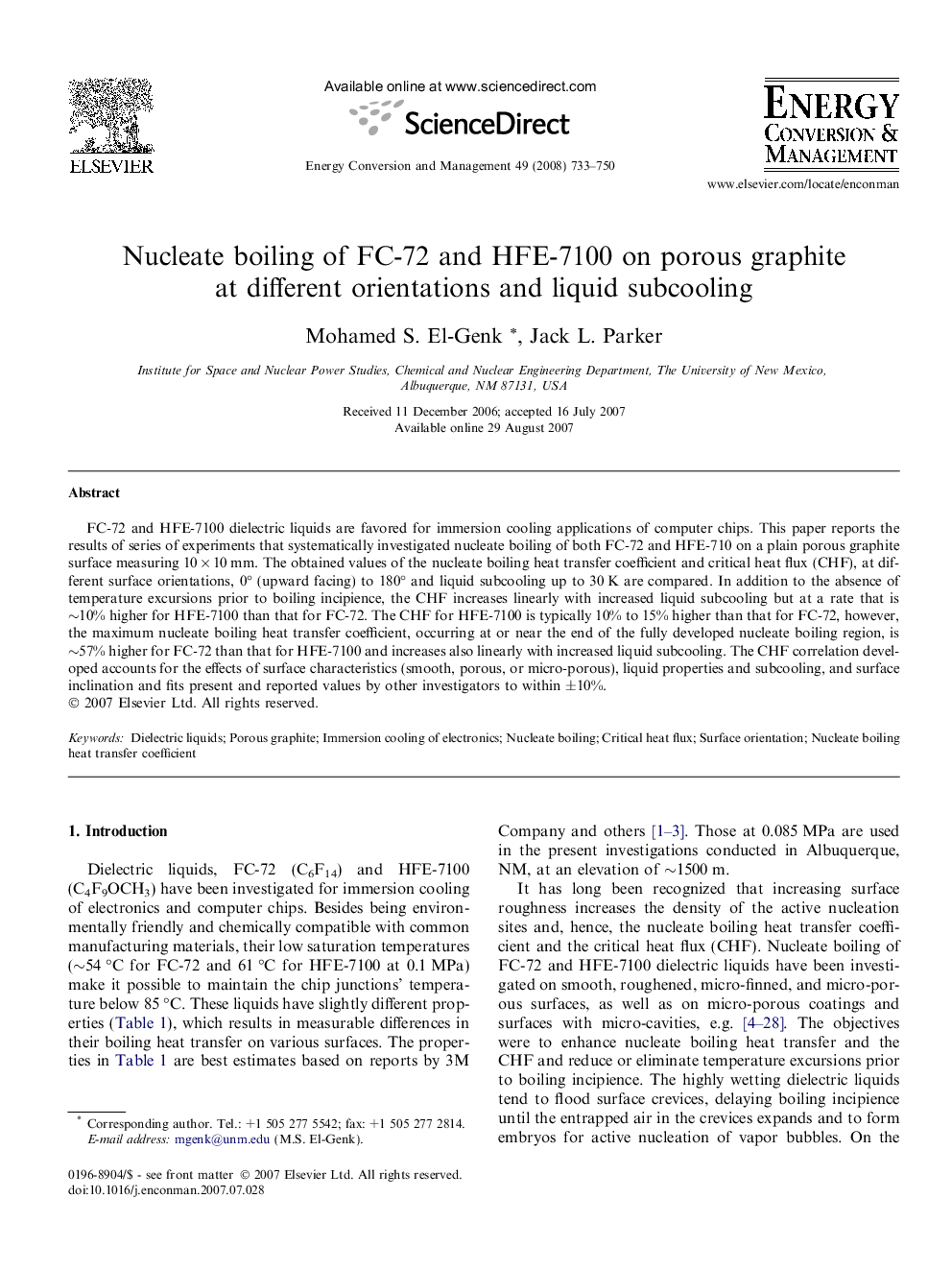| Article ID | Journal | Published Year | Pages | File Type |
|---|---|---|---|---|
| 772851 | Energy Conversion and Management | 2008 | 18 Pages |
FC-72 and HFE-7100 dielectric liquids are favored for immersion cooling applications of computer chips. This paper reports the results of series of experiments that systematically investigated nucleate boiling of both FC-72 and HFE-710 on a plain porous graphite surface measuring 10 × 10 mm. The obtained values of the nucleate boiling heat transfer coefficient and critical heat flux (CHF), at different surface orientations, 0° (upward facing) to 180° and liquid subcooling up to 30 K are compared. In addition to the absence of temperature excursions prior to boiling incipience, the CHF increases linearly with increased liquid subcooling but at a rate that is ∼10% higher for HFE-7100 than that for FC-72. The CHF for HFE-7100 is typically 10% to 15% higher than that for FC-72, however, the maximum nucleate boiling heat transfer coefficient, occurring at or near the end of the fully developed nucleate boiling region, is ∼57% higher for FC-72 than that for HFE-7100 and increases also linearly with increased liquid subcooling. The CHF correlation developed accounts for the effects of surface characteristics (smooth, porous, or micro-porous), liquid properties and subcooling, and surface inclination and fits present and reported values by other investigators to within ±10%.
